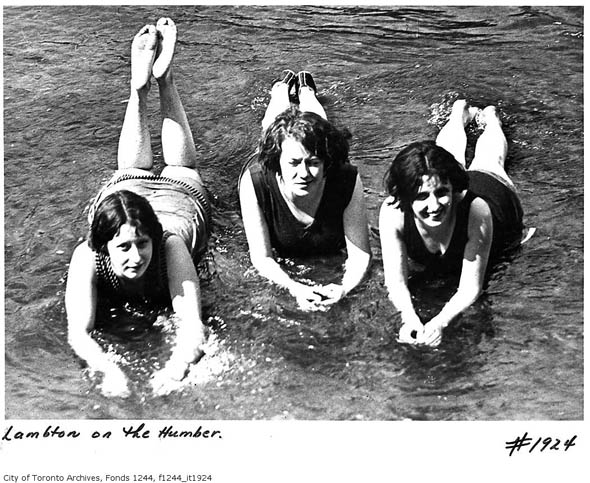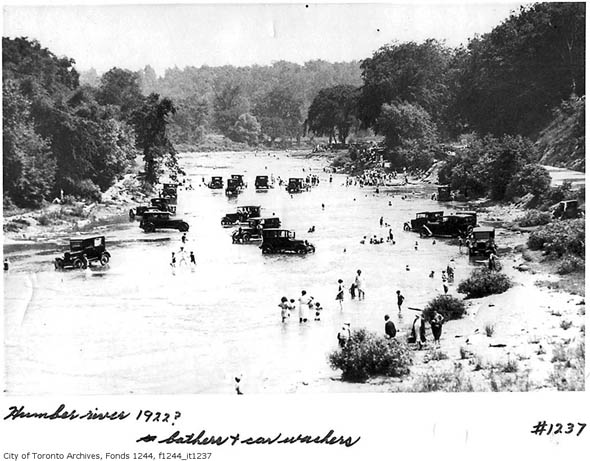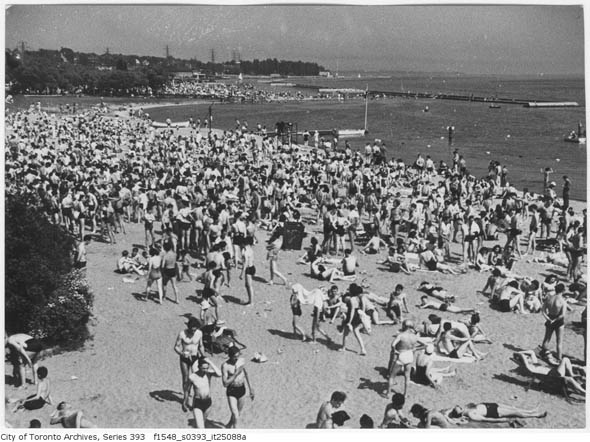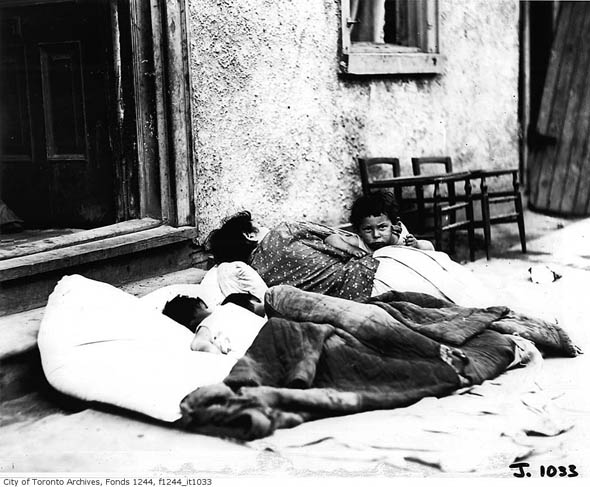
In case you hadn't noticed - it's hot out there. Too hot. Stick to the couch, hot concrete through your shoes type weather. Yesterday, the temperature hit 36 degrees but it felt more like the mid 40s (if you agree with humidity factors, anyway). That said, in this day and age beating the heat has never been easier. Flip on the AC, stand in front of a fan, or simply mooch off a building that has air if you don't have it at home.
Back in the early part of last century, things were a little different during a heatwave. Without emergency cooling centres and refrigerated work spaces, if someone got too hot - and people frequently did - they were in serious danger of dying. Let's take a look back at some particularly rough hot weather from Toronto's history.

In July, 1936, the Saskatoon Star-Pheonix reported that Toronto currently held "an unenviable place in the blazing sun with an all-time high of 104.5 (40.3), officially recorded in the 'ventilated shade' at the Meteorological Bureau." The startling figure was the high water mark in the great heat wave of the depression, a slow burn of hot weather that started in June and seared records in place across North America, many of which still stand today.
Over the summer, Toronto recorded 225 heat deaths, most from heat stroke and heat exhaustion - the media used the blanket term "prostrations" - most of them in the downtown core. Outside the big smoke, the sun scorched crops and evaporated swaths of groundwater, plunging many areas into drought. Air conditioning wasn't unheard of, but very few homes or commercial buildings had an internal cooling system of any kind.

Even today, a prolonged period of extremely hot weather is statistically the deadliest type of natural disaster: more people, usually the elderly or people with underlying health issues, die in heat waves than in floods, hurricanes or anything else mother nature can unleash.
During the scorcher of 1936, Toronto's citizens took extreme measures to stay cool, and stay alive. People moved into their basements, slept outside, chugged lemonade, and headed to the beach and Islands in droves - the ferries saw usual ridership double from the year before. There was even a report of a woman sleeping on the cool stone of a grave marker for relief. Rivers and streams provided a place for many of Toronto's sweatiest to cool off for a brief moment.
Toronto's infrastructure was also a victim of the heat. According to Heritage Toronto, the Cherry Street bridge buckled in the sun and had to be hosed down before it could return to its original shape. Sidewalks and road surfaces across the city erupted in the unrelenting onslaught.
As the hot weather continued, the death toll began to noticeably spike. Morgue staff, funeral directors, grave diggers, coffin makers, and florists were gamely employed putting the city's extra stiffs to rest. Animals weren't exempt: many beloved dogs, cats, birds, horses and livestock gave up the ghost in those months, too hot to carry on.

Perhaps the worst suffering was experienced in the city's poor neighbourhoods where cramped and dirty conditions exacerbated the effects of the sun. For people without the means, there was no place to escape: men, women and children simply baked and hoped for the day when the weather would break.
Unlike this brief spell of warm weather, which is set to cool off after the weekend, the astounding early summer heat of 1936 continued into August of that year. Despite the brutal conditions lingering well into September in parts of the United States, the warmth mostly fell in line with seasonal averages for the rest of the season. When the dead were counted, a total of 780 people in Canada had lost their lives as a direct result of the weather.
Black and white pictures don't do hot weather justice. The lack of colour gives everything a washed out, rainy day look and softens the impact of the harsh sun. This summer, appreciate your AC or fan, even if it isn't totally effective. Things could be much worse.
Photos from the City of Toronto Archives
No comments:
Post a Comment